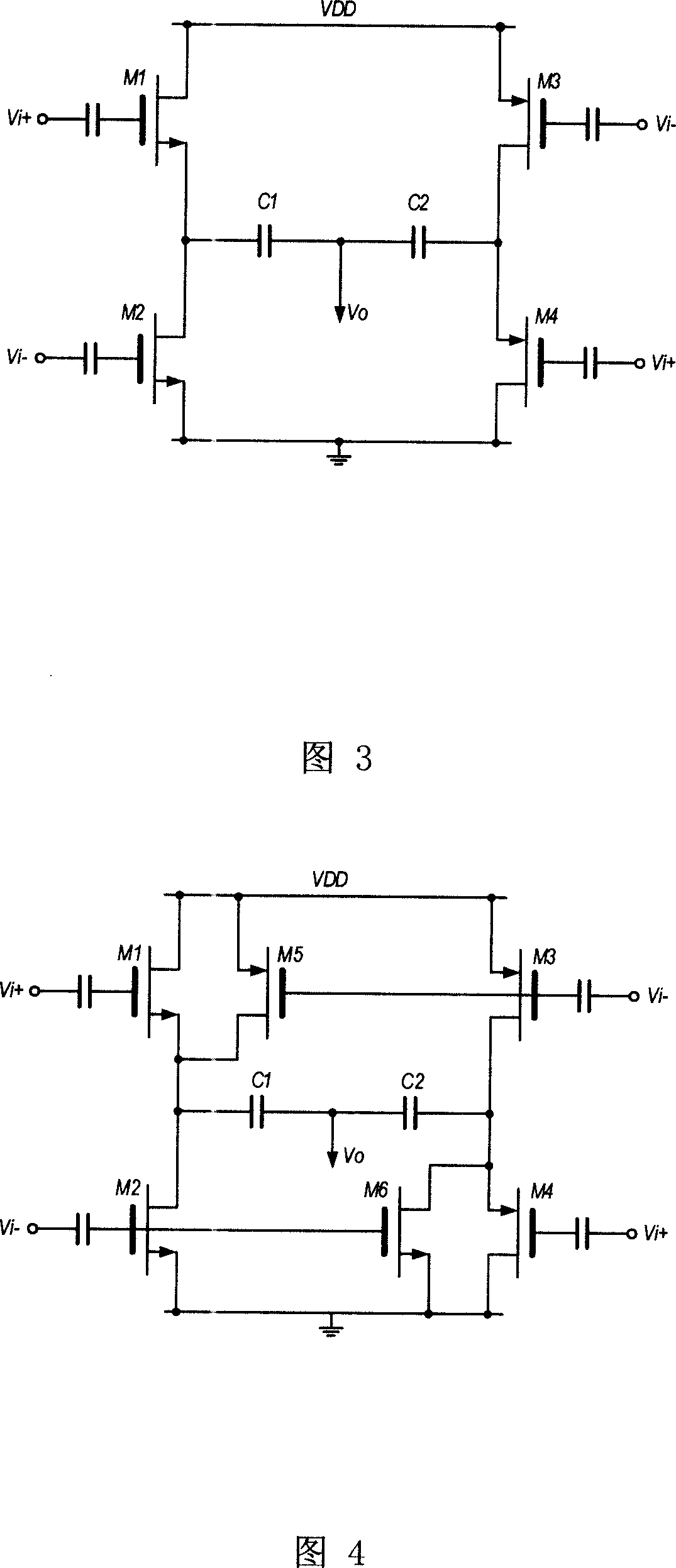Radio-frequency differential-to-single-ended converter
A converter, differential technology, applied in the field of RF differential to single-ended converters, can solve the problems of unbalanced load characteristics of two channels, difficult chip integration, circuit occupation, etc., to achieve good linearity, low power loss, and load balance. Effect
- Summary
- Abstract
- Description
- Claims
- Application Information
AI Technical Summary
Problems solved by technology
Method used
Image
Examples
Embodiment Construction
[0022] Referring to Fig. 1, the N-type radio frequency difference of the present invention comprises two N-type transistors M1 and M2 to the single-ended converter, the source of transistor M1 is interconnected with the drain of transistor M2 as output terminal Vo, and the drain of transistor M1 is connected to Power supply, the source ground wire of transistor M2, the positive terminal Vi+ of the differential input signal is input to the gate of transistor M1 through AC coupling (the DC bias circuit is omitted in the figure), and the negative terminal Vi- of the differential input signal is input to the transistor through AC coupling Gate of M2.
[0023] The transistor M1 constitutes a source follower, and the output terminal Vo follows the input Vi+ in the same direction. Transistor M2 constitutes a common-source amplifier, amplifying the input Vi- inversely. Since Vi+ and Vi- are reversed, the output of the source follower and the common source amplifier are in the same di...
PUM
 Login to View More
Login to View More Abstract
Description
Claims
Application Information
 Login to View More
Login to View More - R&D
- Intellectual Property
- Life Sciences
- Materials
- Tech Scout
- Unparalleled Data Quality
- Higher Quality Content
- 60% Fewer Hallucinations
Browse by: Latest US Patents, China's latest patents, Technical Efficacy Thesaurus, Application Domain, Technology Topic, Popular Technical Reports.
© 2025 PatSnap. All rights reserved.Legal|Privacy policy|Modern Slavery Act Transparency Statement|Sitemap|About US| Contact US: help@patsnap.com


